Seasonic Prime Titanium 650W PSU Review
Seasonic jumps onto the 80 PLUS Titanium wagon with three new units that belong to its Prime family. The 650 W model is under our scope today. Besides high efficiency, it also offers great performance, quiet operation, and nice looks.
Why you can trust Tom's Hardware
Transient Response Tests
Advanced Transient Response Tests
For details on our transient response testing, please click here.
Ιn these tests, we monitor the SSR-650TD's response in two different scenarios. First, a transient load (10 A at +12V, 5 A at 5V, 5 A at 3.3V and 0.5 A at 5VSB) is applied for 200 ms while the PSU works at 20 percent load. In the second scenario, the SSR-650TD is hit by the same transient load while operating at 50 percent load. In both tests, we use our oscilloscope to measure the voltage drops caused by the transient load. The voltages should remain within the ATX specification's regulation limits.
These tests are crucial because they simulate the transient loads a PSU is likely to handle (such as booting a RAID array or an instant 100 percent load of CPU/GPUs). We call these tests "Advanced Transient Response Tests," and they are designed to be very tough to master, especially for a PSU with a capacity of less than 500 W.
Advanced Transient Response at 20 Percent
| Voltage | Before | After | Change | Pass/Fail |
|---|---|---|---|---|
| 12V | 12.241V | 12.157V | 0.69% | Pass |
| 5V | 5.008V | 4.934V | 1.48% | Pass |
| 3.3V | 3.323V | 3.216V | 3.22% | Pass |
| 5VSB | 4.992V | 4.948V | 0.88% | Pass |
Advanced Transient Response at 50 Percent
| Voltage | Before | After | Change | Pass/Fail |
|---|---|---|---|---|
| 12V | 12.226V | 12.133V | 0.76% | Pass |
| 5V | 5.004V | 4.928V | 1.52% | Pass |
| 3.3V | 3.319V | 3.197V | 3.68% | Pass |
| 5VSB | 4.983V | 4.934V | 0.98% | Pass |


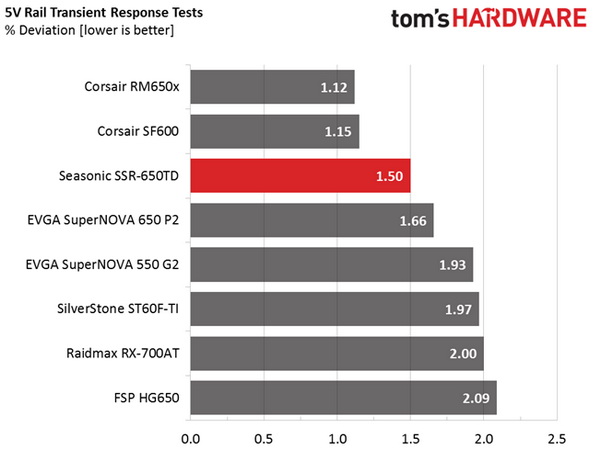
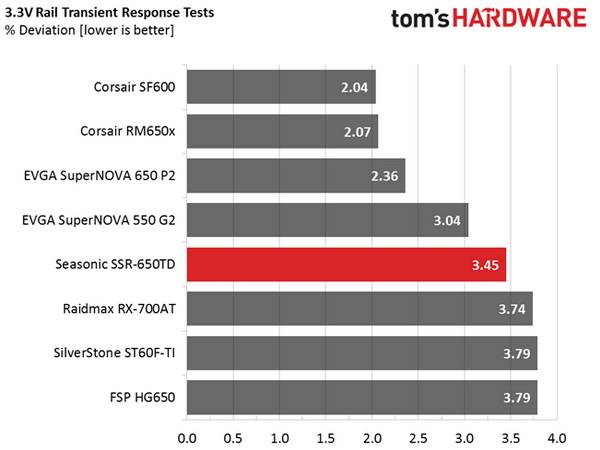
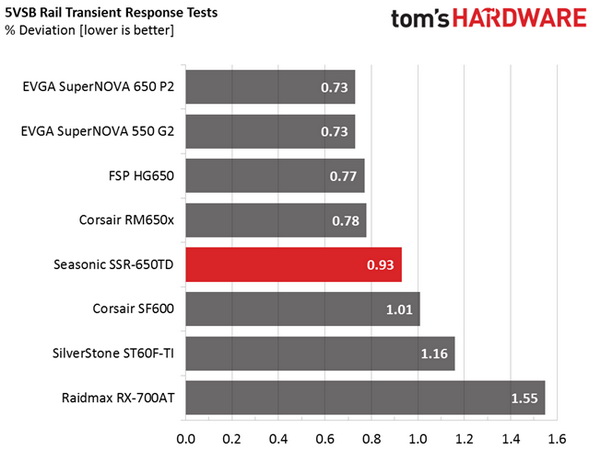
The +12V rail's transient response isn't among the best we have seen, but it's at least decent. Ideally, we would like to see close to 0.5% deviations. The 5V and 5VSB rails perform very well, while the 3.3V rail's performance isn't particularly good for such a high-end PSU.
Here are the oscilloscope screenshots we took during Advanced Transient Response Testing:
Transient Response At 20 Percent Load

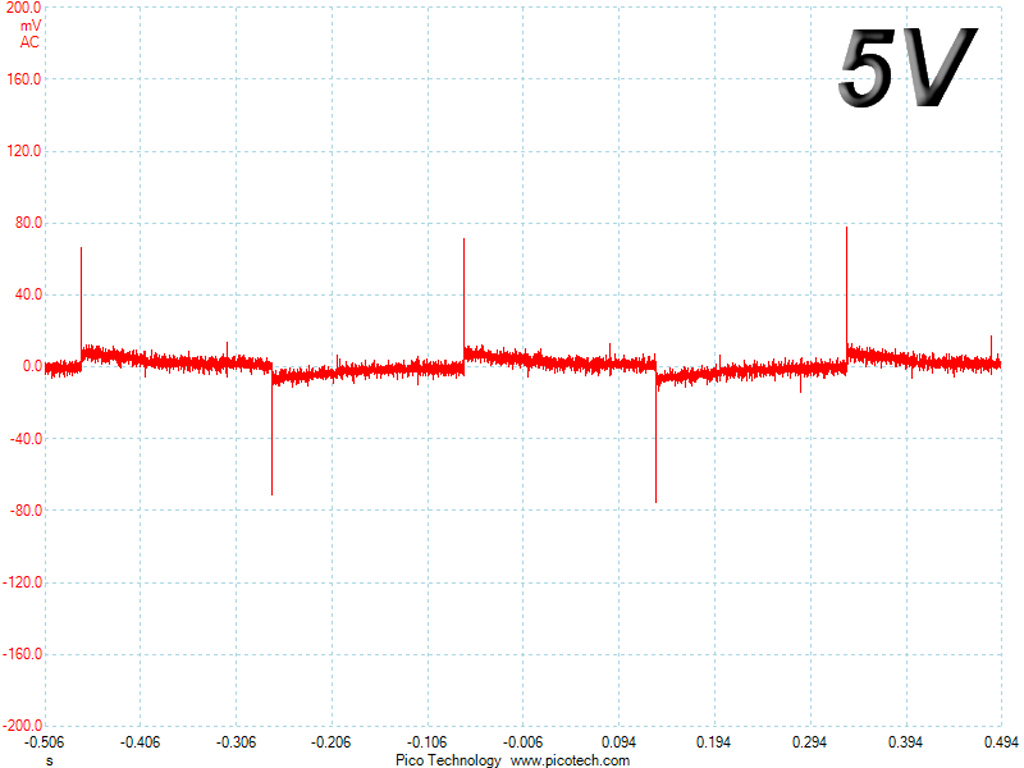
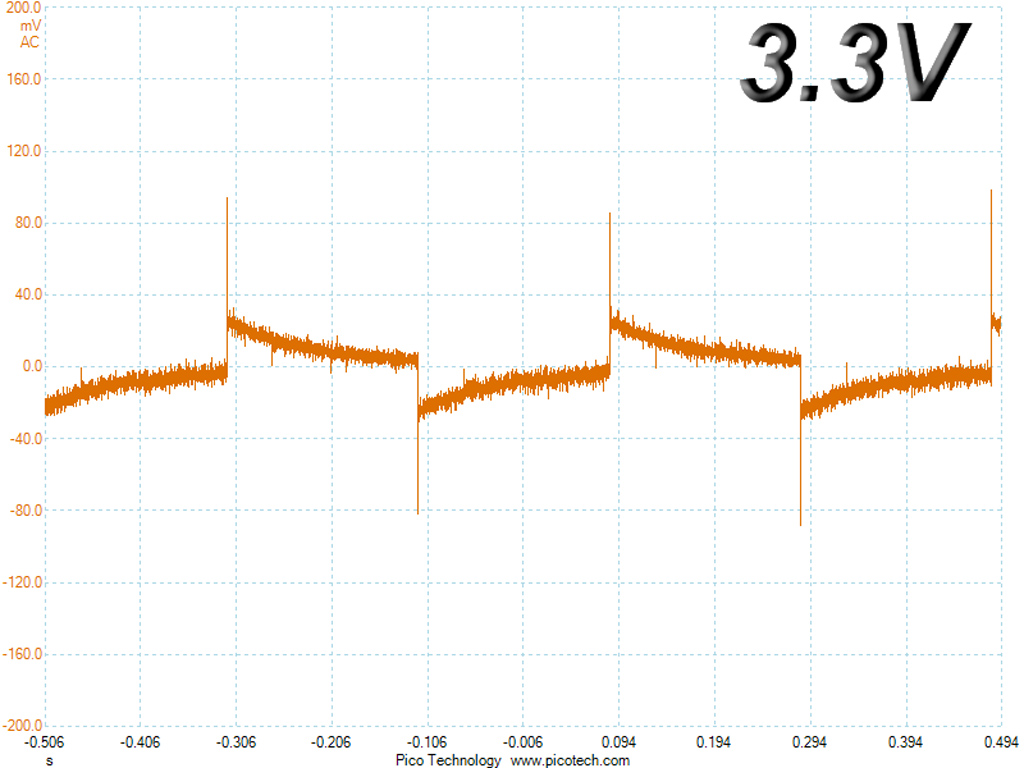
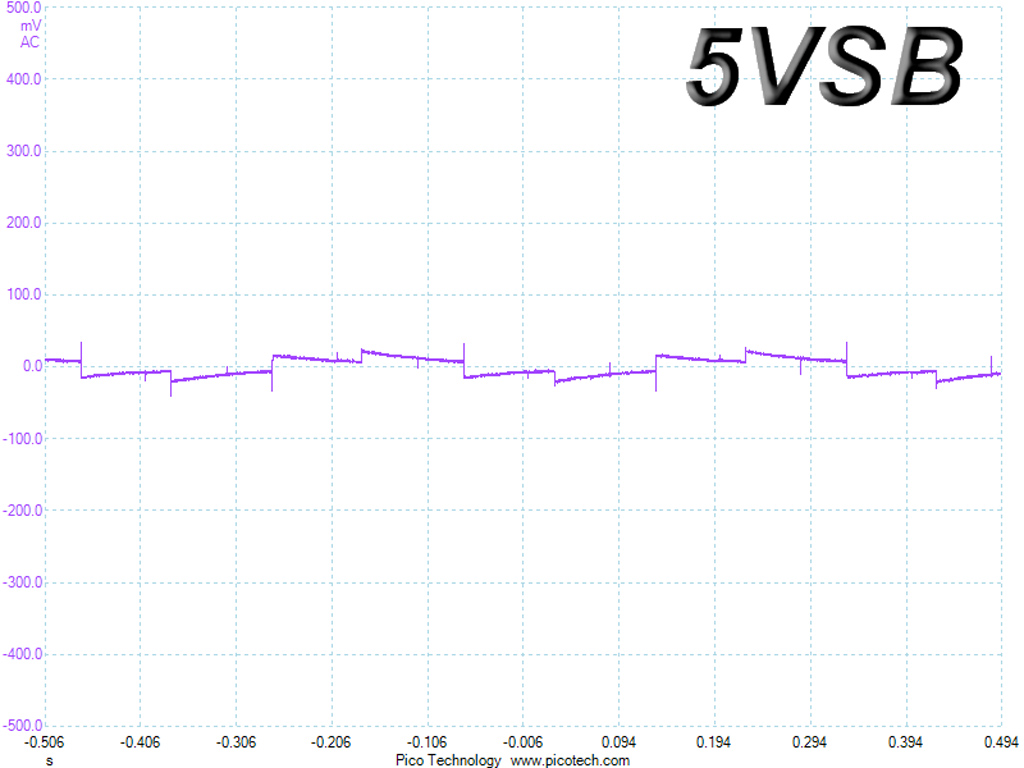
Transient Response At 50 Percent Load

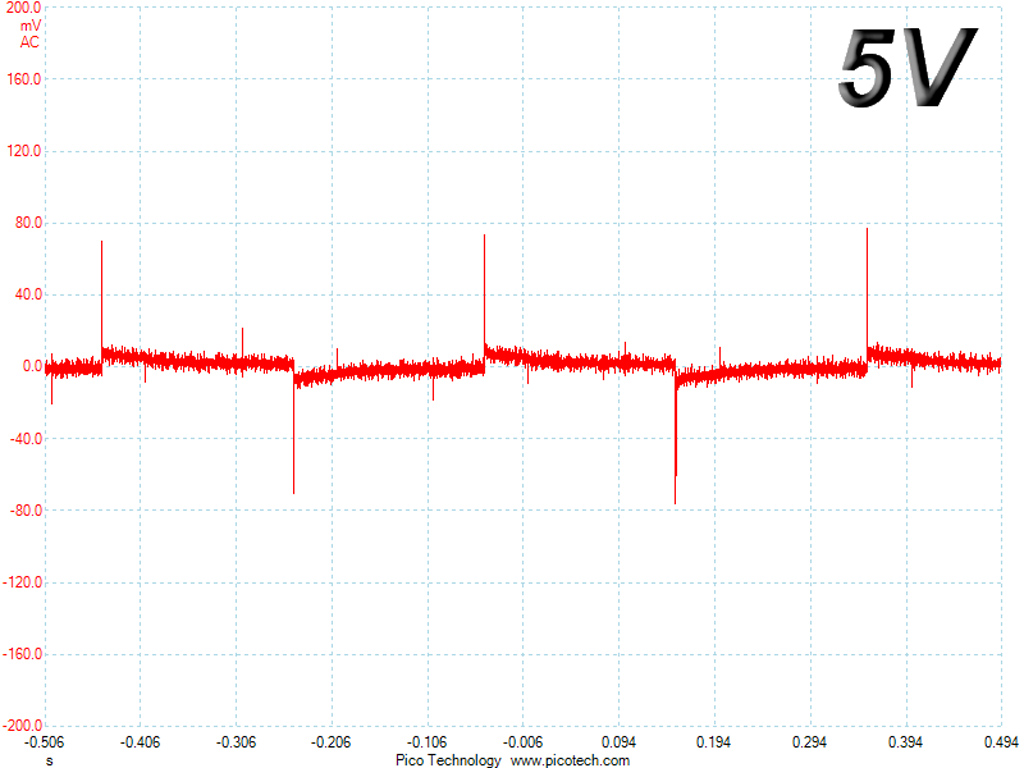
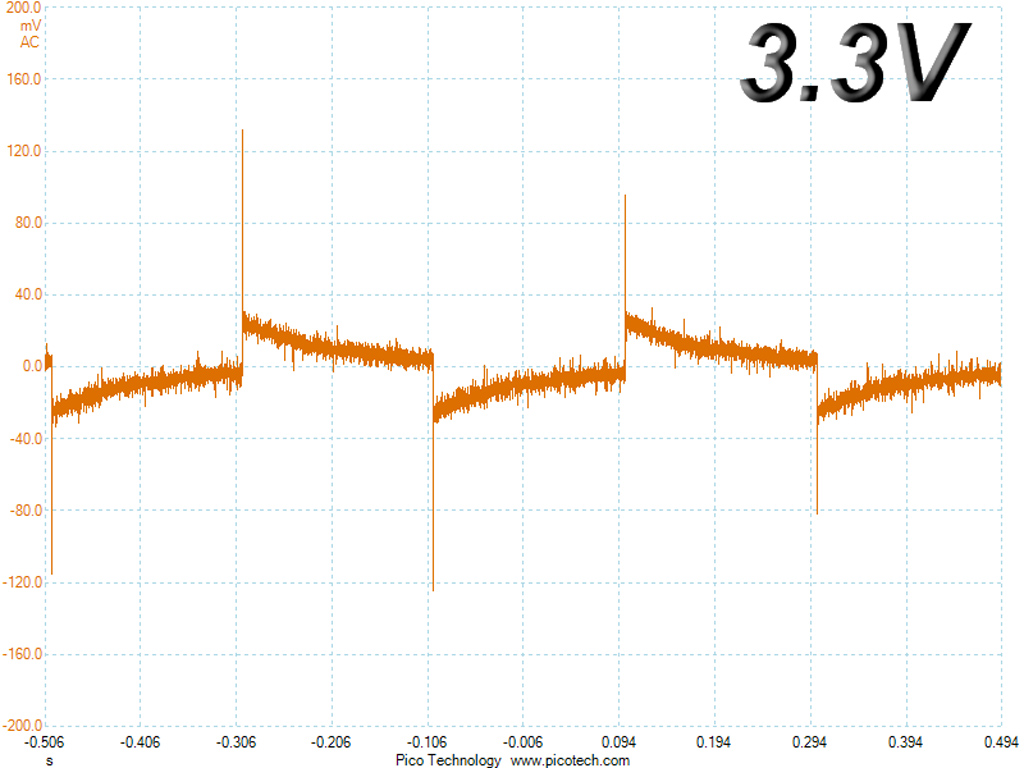
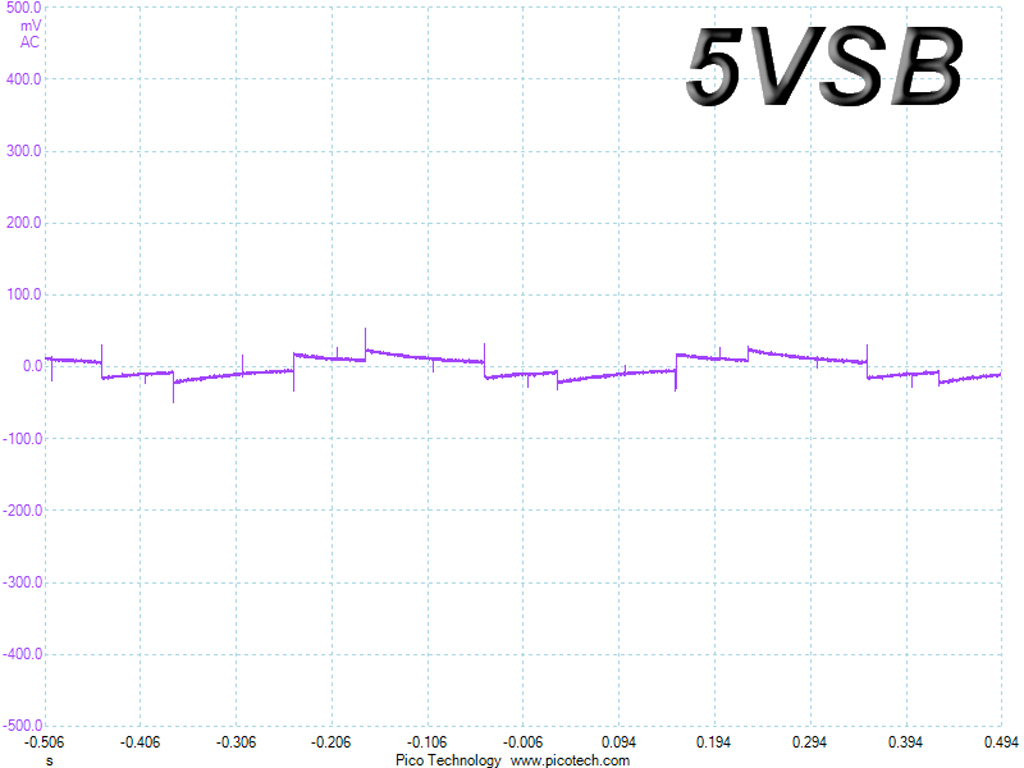
Turn-On Transient Tests
In the next set of tests, we measure the SSR-650TD's response in simpler transient load scenarios—during the PSU's power-on phase.
For the first measurement, we turn off the SSR-650TD, dial in the maximum current the 5VSB rail can output and switch the PSU on. In the second test, we dial the maximum load the +12V can handle and start the PSU while it's in standby mode. In the last test, while the SSR-650TD is completely switched off (we cut the power or switch the PSU off by flipping its on/off switch), we dial in the maximum load the +12V rail can before switching the PSU on from the loader and restoring power. The ATX specification states that recorded spikes on all rails should not exceed 10 percent of their nominal values (+10 percent for 12 V is 13.2 V, and 5.5 V for 5 V).
Get Tom's Hardware's best news and in-depth reviews, straight to your inbox.
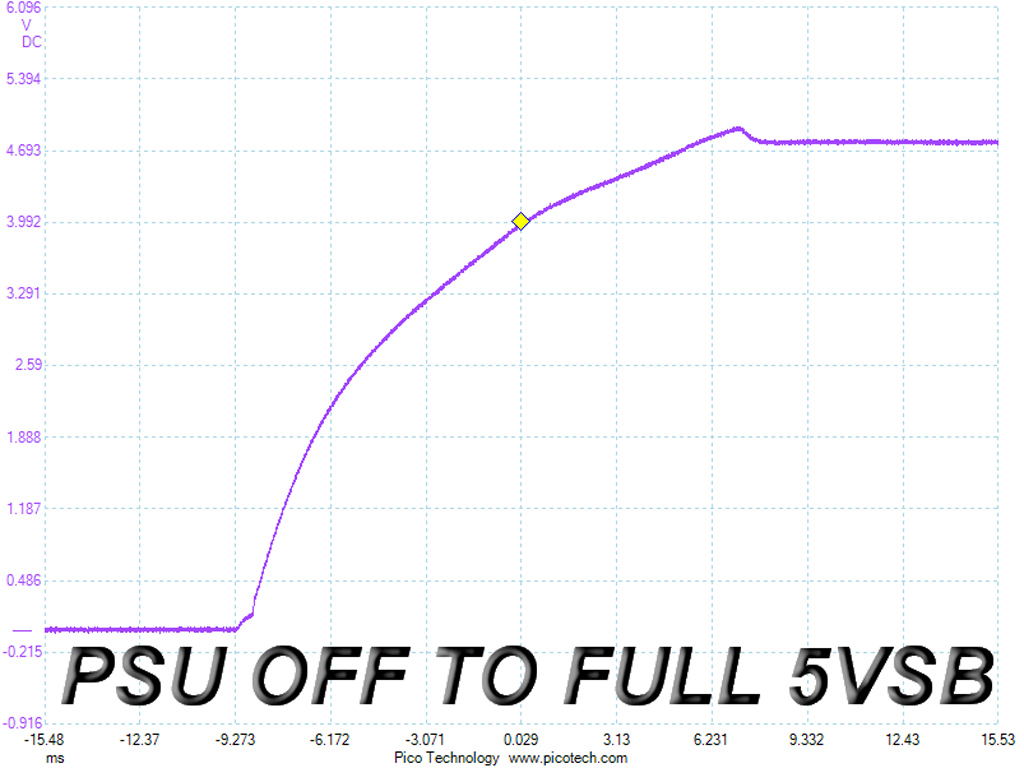

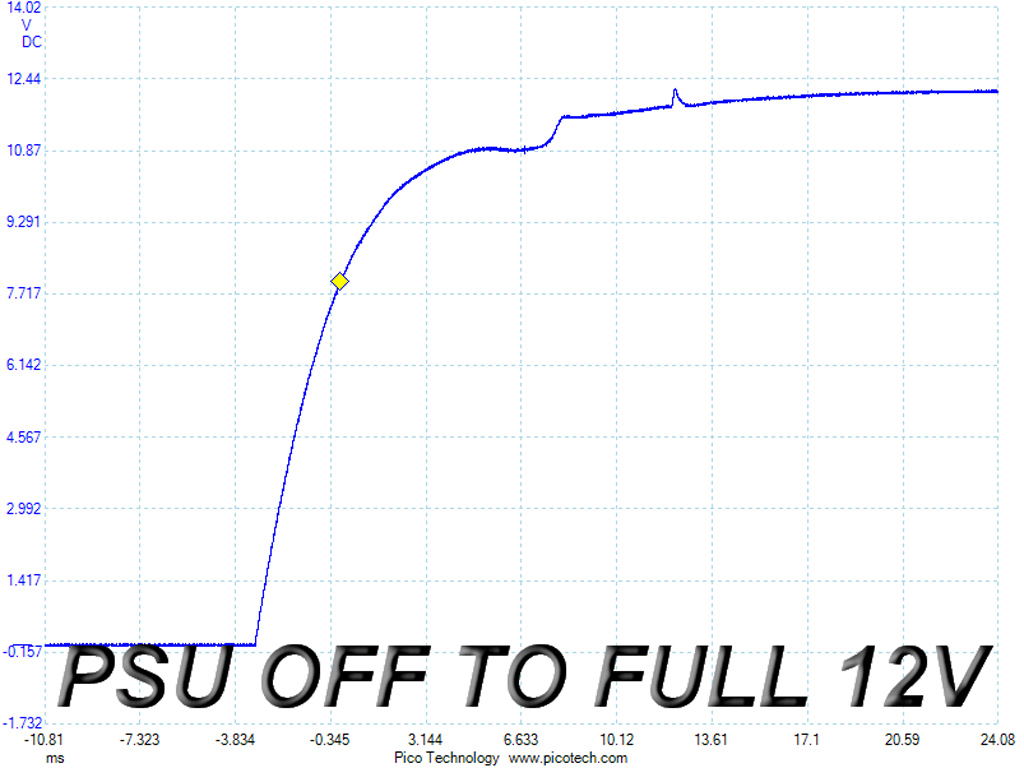
We notice a small voltage overshoot at 5VSB and two small spikes during the +12V tests. It's not a perfect performance, but good overall.
Current page: Transient Response Tests
Prev Page Cross-Load Tests And Infrared Images Next Page Ripple Measurements
Aris Mpitziopoulos is a contributing editor at Tom's Hardware, covering PSUs.
-
bharatwd 60 Ampere of inrush current is too high for 230 V countries. Wont that damage the other parts in the pc?Reply -
Aris_Mp It won't damage anything in the PC since it doesn't have to do anything with the PSU's secondary side. High inrush currents apply stress to the electrical infrastructure (switches, relays etc.)Reply -
bharatwd Hi Aris, thanks for the reply..............So it will basically hurt the PSU components itself?Reply -
turkey3_scratch My mind is blown. This is a great unit and I'm happy to see the transient response performance was good. HardOCP's testing on one of the Prime Titanium units shows not-so-good transient response performance.Reply
Whoops accidental upvote above. -
Aris_Mp Nope it won't hurt the PSU, just the breakers and electrical circuits before it will be stressed a bit.Reply
Haswell ready: I was thinking to change this to S6/S7 compatible. Probably the time has come for this to happen. -
bharatwd Thanks for the reply Aris........10 years warranty will be fun if the current inrush is at 60+ Ampere :) especially in India :)Reply -
Virtual_Singularity Excellent review. Impressive work/effort by Seasonic as well. Curious to see how the other units in this new line stack up to this one. Haven't seen HOCP's review yet, but there has been some variance in others, but still seems like a solid effort on Seasonic's part.Reply
With no capacitors in the cables, can't see a reason not to flatten the atx connector as well. I guess the sleeved atx connect look has become somewhat traditional. Not a criticism by any means, just saying. -
turkey3_scratch Reply18563170 said:Excellent review. Impressive work/effort by Seasonic as well. Curious to see how the other units in this new line stack up to this one. Haven't seen HOCP's review yet, but there has been some variance in others, but still seems like a solid effort on Seasonic's part.
With no capacitors in the cables, can't see a reason not to flatten the atx connector as well. I guess the sleeved atx connect look has become somewhat traditional. Not a criticism by any means, just saying.
On Jonnyguru Oklahomawolf likes the ATX cable to be sleeved and the others to be ribbon; this is because 24 wires can sometimes become difficult to manage in ribbon style versus sleeved. That's just his thinking at least, and I sort of understand where he comes from with that. If it's ribbon style that also makes it an extremely wide cable, whereas if it is sleeved it's more narrow for better cable routing and then widens up at the end. -
JackNaylorPE I find round sleeved cables much more difficult to manage, and the reason why many builders sleeve there own cables or use extensions. OTOH, the plain flat cables are just fugly, you can get the best of both worlds with flat, individually sleeved cables. Individually sleveed cables, with cable combs, offer the optimal combination of aesthetic choice and easier cable routing.Reply
I don't really understand the big "ooh wow" about Titanium rates PSUs; all it is is a "green" energy consumption rating and unless you pay well above the average US utility costs, you'll never get a positive ROI. What I don't understand is why "PSUs and cables" aren't offered as a "bundle". I hate paying a quality set of cable and then leaving them in a box. I'd like to see some PSU manufacturer "step up" and and say offer every PSU with a $xx coupon for a set of cables. The value of the coupon would cover the basic cable set so it would essentially come free with the PSU. OTOH, if you wanted to move up to a, individually sleeved set, you would only have to pay the difference between the base set and the set of your choice
http://www.frozencpu.com/products/18823/psu-cab-50/Corsair_Professional_Series_Individually_Sleeved_DC_Modular_Cable_Kit_Type_3_Generation_2_-_White_CP-8920050.html?tl=g2c413s1599